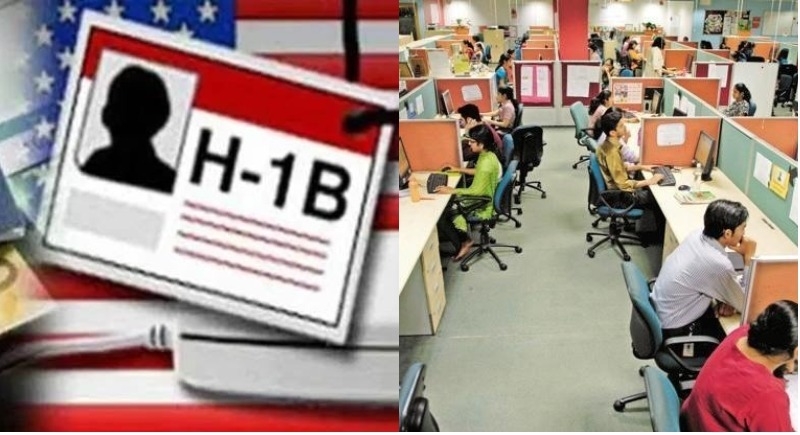Indians accounted for over 74% of H-1B visas in the year 2016 and 2017
Washington, May 8: Indians are highly successful in getting jobs in the western countries mainly in the United States of America. Therefore, India accounts as many as for 74.2% and 75.6% of the total number of H-1B visas issued by the US in the year 2016 and 2017 respectively.

The United States Citizenship and Immigration Services (USCIS) said in its latest report titled ‘Characteristics of H-1B Specialty Occupation Workers' released on Monday said that in 2016 technology professionals from India accounted for 74.2% of the total number of H-1B visas issued by the U.S. and the next year the figure increased to 75.6%.
“In 2016, as many as 70,737 Indians received initial H-1B visas, which dropped to 67,815. During the same period, Indians accounted for 185,489 visas for continuing employment, which increased to 208,608 in 2017. In all there were 256,226 Indians on H-1B visas in 2016 and 276,423 in 2017,” the report added.
The USCIS said in the report that the number of beneficiaries from India approved for initial employment decreased by 4.1% in fiscal 2017, while the number of beneficiaries approved for continuing employment increased by 12.5% in fiscal 2017.
The report further stated that there has been a drop in the number of new H-1B beneficiaries from India. “China with a little over 9%, comes a distant second after India in terms of the number of H-1B visas. The figures for China were 9.3% and 9.4% respectively for 2016 and 2017,” it added.
The USCIS said petitions for initial employment are filed for first-time H-1B employment with an employer, only some of which are applied to the annual cap. Examples of petitions for initial employment that are exempt from the cap include petitions submitted by non-profit research organizations or governmental research organizations.
Continuing employment petitions refer to extensions, sequential employment and concurrent employment, which are filed for foreigners already in the US. Extensions generally are filed for H-1B workers intending to work beyond the initial three-year period up to a total of 6 years, the maximum period generally permissible under law.
A copy of the report, sent to US lawmakers on April 10, became public this week. Dismantling several myths about H-1B, USCIS said the median salary of beneficiaries of approved petitions increased from $82,000 for the fiscal year 2016 to $85,000 for fiscal 2017. While the number of H-1B petitions filed increased 1.24% from 398,718 in 2016 to 403,675 in 2017, the number of H-1B petitions approved increased 5.9% from 345,262 in 2016 to 365,682 in 2017.
“According to the report the number of H-1B petitions approved in 2017 for workers between the ages of 25 and 34 was 66.2%, the number of H-1B petitions approved in 2017 for workers with a bachelor's degree was 45.2%. In addition, 44.5% of approved petitions were for workers with a master's degree, 6.8% had a doctorate, and 3.3% were for workers with a professional degree. The number of H-1B petitions approved in 2017 for workers in computer-related occupations was 69.8%,” it said.
The number of H-1B petitions approved for workers in computer-related occupations increased by 6.6% from 237,837 in 2016 to 254,592 in 2017. The number of H-1B petitions for all other occupation groups increased by 3.4% from 106,418 in 2016 to 110,009 in 2017, the report noted.